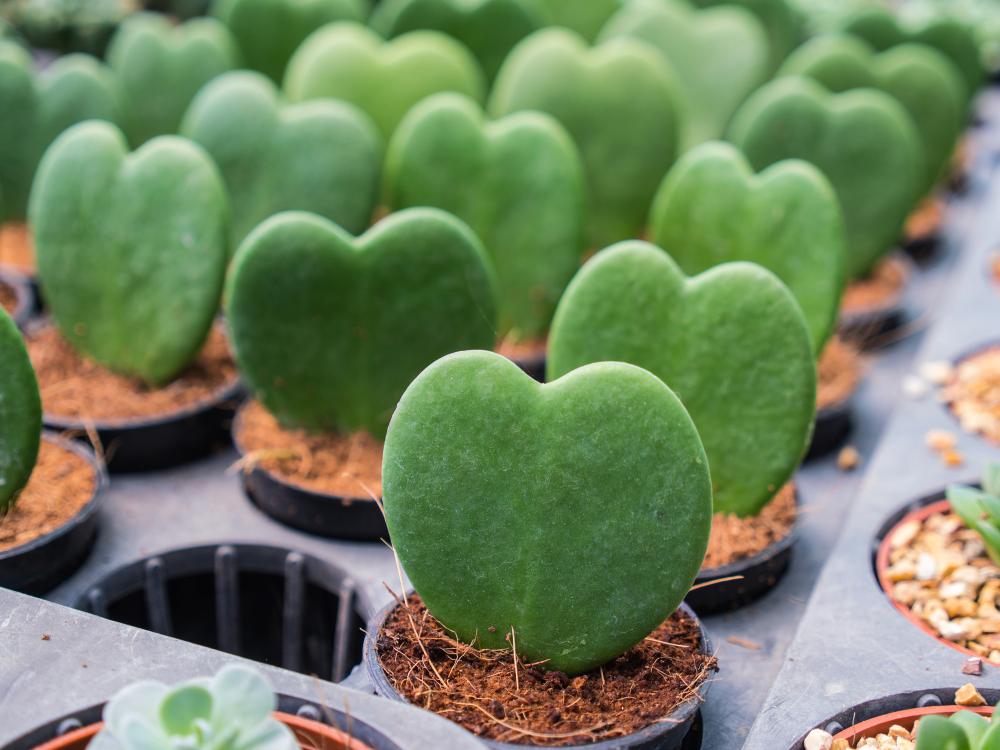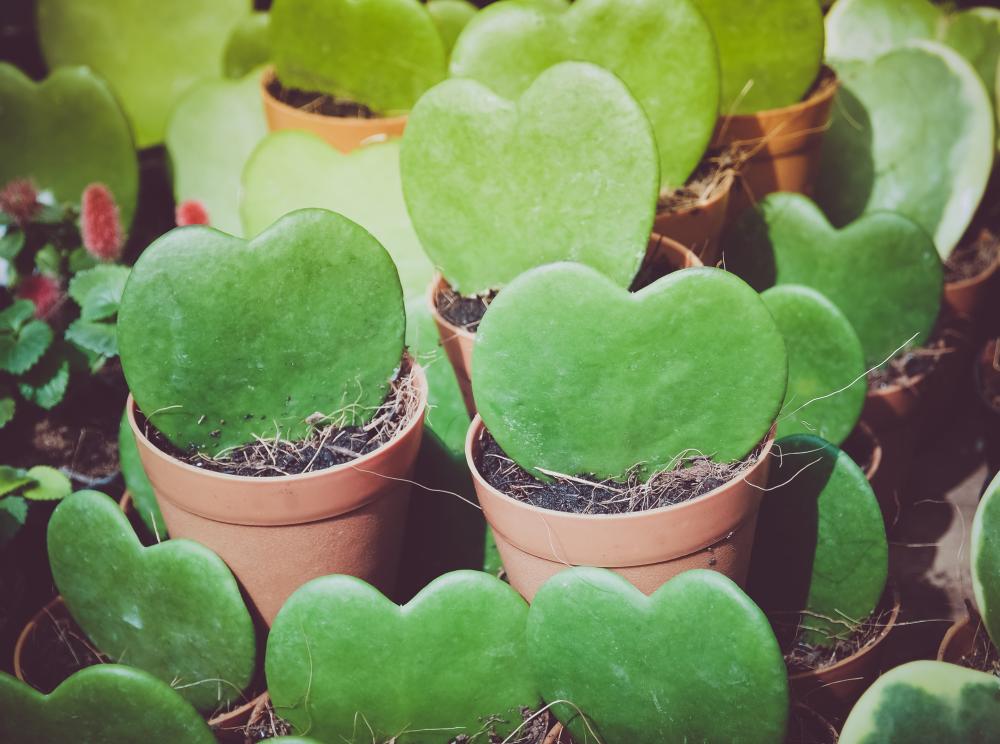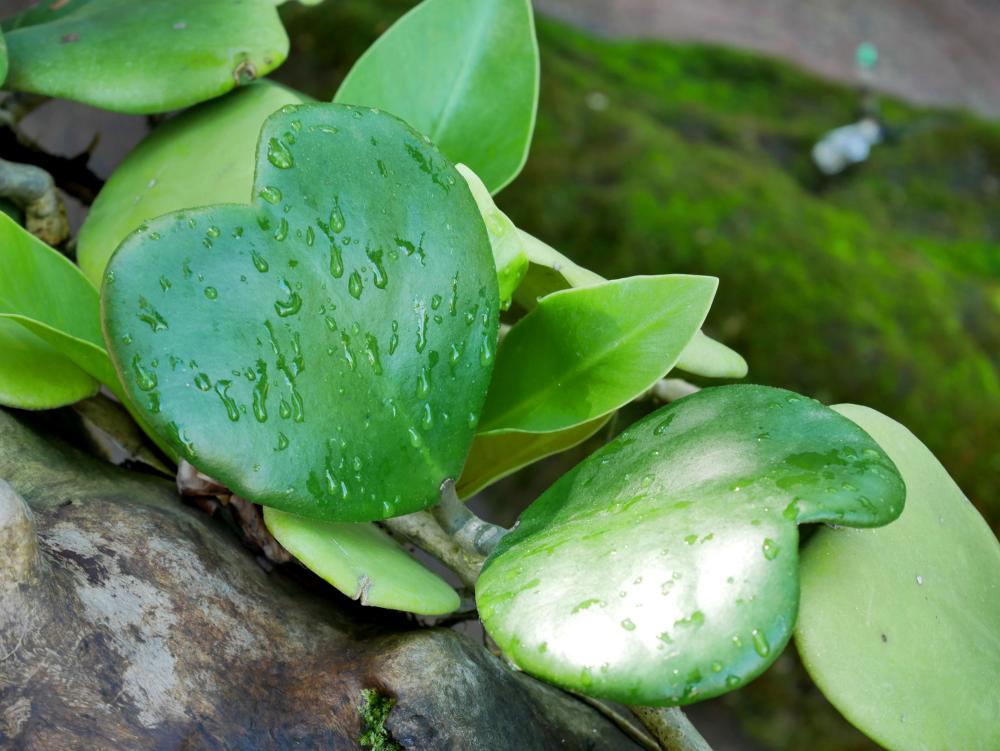Hoya Kerrii Care: How to Grow & Care for the Sweetheart Hoya
Hoyas have so many skeletons in their closet that we will need to demystify shortly. Looking at its aesthetic aura, you’d be scared a bit to grow it as your first houseplant.
The tropical succulent can stay intact for years, even when grown under a modest caring routine. In this guide, we’ll close in on all the bits and pieces you need to know about owning and nurturing the Sweetheart Hoya.
More About the Sweetheart Hoya
Hoya kerrii also goes by Sweetheart Hoya. It comes from the Hoya genus and makes the most sales compared to other houseplants during Valentine’s Day due to its striking heart-shaped leaves. Apart from the delightful foliage, this tropical epiphyte has succulent-like traits, making it fairly easy to care for. Single leaf cuttings tend to be the most sought after, but what you need to know is they take a while to hit maturity, so you want to practice lots of patience if you’re looking to take this route.
This houseplant is native to the tropical parts of Southeast Asia, particularly Vietnam, Cambodia, and Thailand. So, it’s pretty obvious that it loves to grow in a humid environment. Even if you’re region lacks the tropical feel, you can navigate through its preferred growing conditions and hack it with minimal effort. Notably, it’s fairly easy to propagate this petite semi-succulent. It also doesn’t cost much to purchase your Hoya from a commercial gardening store or nursery. Let’s check out the basic cues you want to work with after buying or propagating the Sweetheart Hoya.
Sweetheart Hoya Caring Tips
Flowering & Fragrance
Making your Hoyas blooms isn’t cumbersome. But if you’re growing them indoors, chances that they will bloom are quite slim. The flowers usually have a pink tone in the middle and the outer shell is a white star. There’s however, no magic pill to make your Hoyas bloom. It all comes out naturally. First, the plant needs to be a couple of years old.
Next, you want to place the growing medium somewhere with enough amount of bright, indirect light. Apart from letting it become rootbound, you also need to grow your Hoya in a humid environment. When it’s time to feed it, use a fertilizer that’s rich in phosphorus since this nutrient helps promote the production of flowers during the blooming phase. We’ll discuss the conditions needed for healthy blooms later in this guide.
Growth & Size
Typically, the Sweetheart Hoya grows at a slow to moderate rate. If it’s only a single leaf growing inside the container, don’t expect it to have a fast rate of growth. Most often, this houseplant comes inside a 4’ or 6’ inch growing pot with a provision for hanging so it can trail wide. While the Hoya is dominantly a slow grower, it has the potential to reach up to 10’ inches tall. It might take a couple of years for it to develop some vines and heart-shaped leaves. The vines will begin to elongate further once the plant has achieved healthy and sturdy roots.
Light & Temperature
If you fail to give it optimal lighting, your sweetheart hoya will develop at a really sluggish pace. Not to mention that it’s notably a slow grower. It needs bright and natural light, but you want to place the growing medium in a position that would filter any intense heat during the daytime. You can place the container on a shelf in your kitchen where there’s enough humidity.
We’ll talk about the plant’s humidity requirements shortly, so just you know. To promote a polished and hearty foliage color, it’s best to grow your Hoya near a window that’s facing east. Keep it far from the scorching afternoon sun as it’s more likely to burn the leaves. For this reason, you want to avoid a north-facing window at all costs.
During winter, place the medium in a sunnier spot to prevent the houseplant from experiencing a slow growth rate. You can also make the best use of LED grow lights during the colder months. For a smaller Hoya type, 6 hours under grow lights would be sufficient. If you’re looking to grow your Hoya indoors all year round, it will need a bit more access to light for it to produce flowers.
You need to note that if the green shade on the leaves is turning lighter or yellow, this could mean that your Hoya is receiving an excessive amount of light, so you’ll need to promptly need to make all essential adjustments. One way to block intense heat from the sun is using translucent curtain blinders on the windows.
While doing a little digging, we also learned that if you’re growing a variegated Hoya Kerrii, it will need extra light than those which are entirely green in color. And since a variegated type has less chlorophyll, there are chances it will experience a slower growth rate.
The succulent shows off its hardy traits when growing under USDA hardiness zone 11. You also want to keep the temperature range anywhere between 65 and 80 degrees Fahrenheit.
Soil & Transplanting
After some rigorous probing, I learned that Hoyas do well in regular potting soil. It needs to form at least 50% of the entire medium. The other percentage should ideally be split between orchid barks and perlite or pumice. While drainage is of utter importance, this variety comes from a tropical region and likes to grow in an environment with the right amount of humidity. For this reason, making amendments to the potting soil would help a lot with moisture retention. You can also choose to use orchid bark alone, but will need to water your Hoya quite more often.
Before planting the cuttings during propagation, make sure to loosen up the soil a bit so it can support drainage fairly well. The best time for repotting is during spring or summer. And since we’re dealing with a slow grower, once every 4 years would just be great. If you’re buying an already potted Hoya, I’d suggest you replace the old soil with one that’s revitalized with nutrients, supports drainage, as well as moisture retention. And the primary reason for doing so is you’re not certain how long it has been sitting in the old soil.
Watering
What’s impressive about Hoyas is they can relatively handle neglect. The soaking method is suitable for this type of houseplant. Make sure the soil is completely dry before watering your Sweetheart Hoya once again. During an active growing season, you don’t want to keep the soil entirely dry for too long since this houseplant is a slow grower. On the other hand, try to avoid overwatering as it could cause rotting, alongside a bunch of fungal infections. Since this plant has succulent-like characteristics, it can store some water after absorbing it from the soil.
For this reason, you’ll need to space out the watering intervals. Lessen the number of times you water your Hoya even further during the winter months. During summer, you can moisten the soil once every 7 – 10 days. When it’s winter, once or twice every month will suffice, depending on how wilted the foliage looks. To keep your roots from getting stuck in soggy soil for too long, grow the houseplant inside a pot with enough drainage holes that will help let out any excess moisture.
Humidity
Hoyas tend to prefer a humid environment, so you’ll need to mimic the conditions of tropical Southeast Asia where which is its native home. And it’s more reason my many growers opt to place the growing medium near a window in the kitchen where the humidity levels are relatively high. Even with this kind of hard-to-maintain preference, Hoyas will still thrive in dry air.
Gently misting the foliage quite occasionally would help keep up with its humidity needs. If the foliage looks overstretched, it could mean that the surrounding humidity levels are pretty low. To keep your Hoya from looking stressed, place a pebble tray right below the container, then fill it with water but make sure the medium has enough drainage holes. The other option is misting it once or twice every week during the warmer months. Using a humidifier is also an effective way to keep up with the plant’s humidity needs.
Fertilizer
Feeding won’t be necessary unless you want to see your Hoyas bloom to their optimal capacity and have dense green foliage throughout the seasons. Avoid fertilizing the houseplant during late fall or winter as the growth hormones tend to go into dormancy around this period. At the same time, you want to avoid overfertilizing since there will be so much buildup of salts in the soil, causing the roots to burn. While this is a slow grower, you can just use a general-purpose fertilizer that’s soluble, then dilute it at half its strength. An all-purpose fertilizer such as the Dyna-Grow plant food has all the essential macro-nutrients your Hoya needs and is soluble.
Trailing
Here, there are two ways to go about it. You can choose to train your Hoya how to trail using a trellis or leave nature to take its course. Training your Hoya how to grow up a trellis isn’t a demanding task since most of them climb on trees without any human effort. Make sure to use a sturdy trellis as some Hoyas will develop newer and bulkier leaves as they grow older.
Grooming & Maintenance
Hoyas aren’t fussy houseplants, so there won’t be any intense grooming to do. In fact, you don’t need to regularly prune the plant since it grows at a very slow pace. However, you might need to trim back the vines just to keep the houseplant neat. Cut back each vine right above the node using a sterilized pair of scissors to prevent the spread of fungal or bacterial diseases.
How to Propagate Sweetheart Hoya
Propagating you Sweetheart Hoya isn’t rocket science. You can do it even if it’s your first time owning a houseplant. One of the painless ways to propagate this succulent is using cuttings. Seeds are also a perfect option but might take a little longer to show results, while some that are being sold could be counterfeit. If you find the right seeds to propagate your Hoya with, you can stick with a soilless potting mix with a third portion of pumice or perlite.
You want to source cuttings from a parent plant that looks healthy and free from fungal or bacterial infections, to achieve better results. Propagating using a leaf that has no stem attached to it, reduces the chances of it producing more shoots.
Some miniature roots will emerge off the stems, making it easy to propagate the cuttings in water. Each cutting needs to be between 3’-5’ inches long with at least two leaves on it. Use a stem that’s long enough to provide better anchorage while sprouting inside the pot. Place the cutting in a glass of water, then wait till the roots are at least 3’ inches long.
When preparing the potting mix, you can use 3 parts of coco coir, 1 part of vermiculite, and 3 parts of perlite as amendments. You can choose to stick with a normal potting mix, but this formula helps a lot with moisture retention. Once the roots are well established, it’s time to pot your cuttings.
Common Pest & Disease Problems
From an aesthetic standpoint, you’ll for sure cherish your Hoyas throughout their lifetime. However, pest attacks might be a dreadful downside that could keep you from relishing this plant’s utter magnificence. While this houseplant doesn’t attract too many destructive pests, you want to always be on the lookout for mealybugs. They tend to hide and cause damage to the roots and stems.
You also want to often inspect the underside of leaves and in the nodes for any cotton-like residue. If the damage caused by mealybugs is left unattended, this might escalate further to a fungal disease, causing you to get rid of the entire plant.
To maintain the houseplant’s distinctive appeal, pluck off any dead or affected stems to prevent any disease from spreading. You also want to watch out for scale insects and aphids. The other issue that often deteriorates the overall foliage quality is overwatering. If the leaves are starting to turn yellow, then your Hoya is most likely suffering from excess moisture. Inconsistent watering patterns also lead to root rot.


